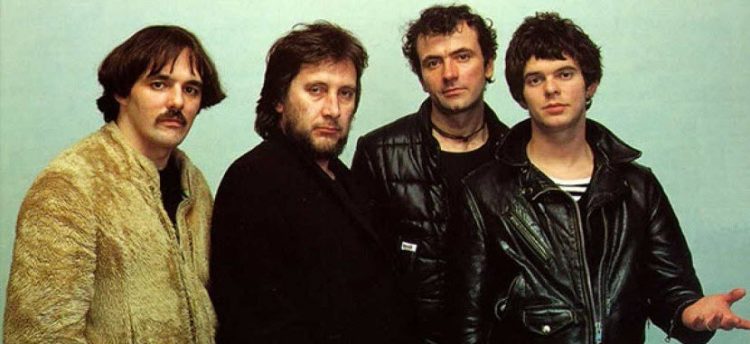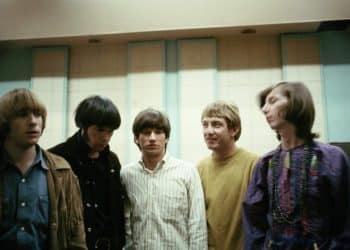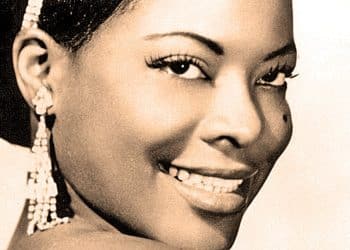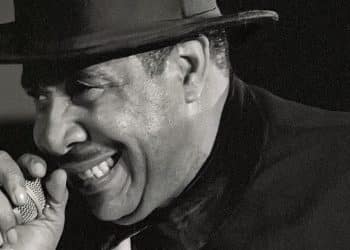Few bands have left as indelible a mark on the music world as The Stranglers. With their enigmatic blend of punk, new wave, and rock, the band carved out a distinct identity that has captivated audiences for decades. From the gritty streets of the 1970s UK punk scene to arenas packed with devoted fans, The Stranglers have been a musical force to be reckoned with. Their catalog is a treasure trove of unforgettable songs, each brimming with raw energy, poetic lyrics, and unmistakable attitude.
In this article, we’ll take you on a thrilling journey through the top 10 most popular songs by The Stranglers. These tracks aren’t just chart-topping hits—they’re cultural milestones that showcase the band’s evolution, versatility, and enduring appeal. Whether you’re a longtime fan or discovering their music for the first time, this list will remind you why The Stranglers stand as one of the most iconic bands in music history. So crank up the volume and get ready to dive into a world of cutting basslines, hypnotic keyboards, and a rebellious spirit that refuses to fade. Let’s explore the timeless anthems that have made The Stranglers legends!
1. Golden Brown (1981)
A mesmerizing and timeless classic, “Golden Brown” stands as The Stranglers’ most celebrated and enigmatic song. Released in 1981, it captivated audiences with its unique fusion of styles, blending Baroque-inspired melodies with a hypnotic, waltz-like rhythm. The song’s delicate harpsichord line, played by Dave Greenfield, gives it an almost ethereal quality, setting it apart from the raw aggression of the punk movement that had defined much of the band’s early work.
Lyrically, “Golden Brown” has remained a subject of debate for decades. Some listeners interpret it as a love song, an ode to a mysterious woman, while others see it as an allusion to heroin, with “golden brown” describing both the drug’s color and its intoxicating effects. This ambiguity only adds to the track’s mystique, making it one of The Stranglers’ most intriguing compositions.
Despite its unconventional time signature and complex structure, the song became a massive hit, reaching No. 2 on the UK Singles Chart. Its haunting beauty has ensured its place in music history, influencing countless artists across genres. Even today, “Golden Brown” remains as captivating as ever, proving that great music transcends time and interpretation.
2. Peaches (1977)
Few songs embody the rebellious, no-holds-barred attitude of The Stranglers quite like “Peaches.” Released in 1977, the track immediately caused a stir with its unmistakable bassline, sarcastic lyrics, and bold attitude. As a defining anthem of punk’s golden era, “Peaches” delivered a mix of humor, social commentary, and controversy that made it an instant classic.
Musically, the song is built around Jean-Jacques Burnel’s aggressive, growling bass riff, which dominates the track from start to finish. The interplay between the bass, Hugh Cornwell’s nonchalant vocal delivery, and the steady, almost hypnotic drumbeat creates a laid-back yet defiant feel. While at first glance the lyrics seem to describe a man leering at women on a beach, there’s a strong undercurrent of satire, poking fun at both male bravado and the class divisions of British seaside culture.
Upon its release, the song faced censorship issues due to its suggestive content, with some radio stations refusing to play it. However, this only added to its notoriety, making it even more appealing to punk fans. Decades later, “Peaches” remains a standout track in The Stranglers’ catalog, a song that perfectly captures the band’s ability to mix provocation with irresistible grooves.
3. No More Heroes (1977)
A fierce and thought-provoking anthem, “No More Heroes” is one of The Stranglers’ most iconic tracks. Released in 1977, at the height of the punk movement, the song perfectly captures the band’s signature blend of aggression, cynicism, and biting social commentary. With its rapid-fire guitar riffs, pounding drums, and Jean-Jacques Burnel’s unmistakable bassline, the track delivers an electrifying energy that continues to resonate with fans.
The lyrics lament the loss of historical and cultural icons, referencing figures such as Leon Trotsky, Lenny Bruce, and others who, in the band’s eyes, stood for something significant. The song questions the absence of modern-day heroes, suggesting that those who once challenged the status quo have disappeared, leaving behind a world that feels increasingly uninspired. This theme of disillusionment struck a chord with the punk generation, who were already rejecting mainstream ideals.
Beyond its message, “No More Heroes” is musically relentless, with Hugh Cornwell’s snarling vocals and Dave Greenfield’s swirling keyboard flourishes adding depth to the track. Over the years, it has become a defining song of The Stranglers’ career and a punk rock staple, proving that rebellion, wit, and raw musical power never go out of style.
4. Always the Sun (1986)
A departure from The Stranglers’ usual punk-infused edge, “Always the Sun” showcases the band’s more reflective and melodic side. Released in 1986, the song blends warm instrumentation with poignant lyrics, creating a track that feels both uplifting and melancholic. It was a significant shift in tone for the band, proving their ability to evolve beyond their punk roots.
Lyrically, the song poses existential questions about life, fate, and fairness. The recurring line, “Who gets the job of pushing the knob?” suggests frustration with the unpredictability of success and power. Is life governed by chance, or is there a greater force at play? These universal themes make the song deeply relatable, resonating with listeners on a personal level.
Musically, “Always the Sun” is rich and atmospheric. The shimmering guitar work, steady drumbeat, and smooth synth layers create a lush soundscape that perfectly complements the song’s introspective mood. Hugh Cornwell’s vocals are both soothing and questioning, adding to the track’s emotional weight.
Despite its initial modest chart performance, the song has remained one of the band’s most enduring hits. Over the years, it has become a staple in their live performances and a fan favorite, proving that sometimes, even in uncertainty, the sun still shines.
5. Strange Little Girl (1982)
A hauntingly beautiful and mysterious song, “Strange Little Girl” is one of The Stranglers’ most emotionally resonant tracks. Originally written in the early 1970s when the band was still trying to secure a record deal, the song was initially rejected by record labels. However, it was finally released in 1982, becoming an unexpected hit and showcasing a softer, more introspective side of the band.
The lyrics tell the story of a young woman trying to navigate an unforgiving world, possibly running away from something or someone. There’s an underlying sadness to the song, with lines that suggest isolation and longing. This sense of melancholy is further amplified by the song’s delicate instrumentation—Dave Greenfield’s eerie synth lines, Hugh Cornwell’s restrained yet evocative vocals, and Jean-Jacques Burnel’s subtle bass work all come together to create an atmosphere of quiet despair.
Unlike many of The Stranglers’ more aggressive tracks, “Strange Little Girl” thrives on subtlety. The song’s haunting quality and its emotionally ambiguous lyrics have led to multiple interpretations over the years, making it one of their most intriguing works. It remains a standout in their catalog, proving that sometimes the most powerful songs are the ones that whisper rather than shout.
6. Skin Deep (1984)
Smooth, sophisticated, and deeply introspective, “Skin Deep” marked a stylistic evolution for The Stranglers when it was released in 1984. The song deviates from their earlier punk sound, embracing a more polished, synth-driven aesthetic that showcased the band’s versatility. Despite its slick production, the track retains a sense of emotional weight, offering a dark reflection on trust, deception, and the superficiality of human relationships.
Lyrically, “Skin Deep” warns against being deceived by appearances, urging listeners to look beyond the surface. The chorus, with its haunting refrain “Better watch out for the skin deep”, reinforces the idea that people are often not what they seem. This theme of hidden truths and betrayal adds a layer of depth to the song, making it resonate beyond its catchy melody.
Musically, the track is built around a pulsing bassline and an infectious synth hook, creating a hypnotic groove that pulls the listener in. Hugh Cornwell’s restrained yet expressive vocals add to the song’s brooding atmosphere, while Dave Greenfield’s keyboards bring a sleek, futuristic edge.
Although it was a departure from their earlier sound, “Skin Deep” became one of The Stranglers’ most commercially successful songs, proving their ability to evolve while maintaining their signature bite.
7. Get a Grip (On Yourself) (1977)
The Stranglers introduced themselves to the world with “Get a Grip (On Yourself),” their explosive debut single released in 1977. A defiant, high-energy track that blends punk with elements of rock and jazz, it set the stage for the band’s distinct sound and rebellious attitude.
The song’s lyrics tell the story of perseverance and self-reliance, with lines like “Did you ever have a ride in a light blue car?” hinting at personal struggles and the drive to keep moving forward despite obstacles. This sense of determination and grit resonated with a generation seeking its own identity in a rapidly changing world.
Musically, the song is propelled by a powerful bassline, raw guitar riffs, and Dave Greenfield’s signature swirling keyboard work, which adds a slightly psychedelic edge. Hugh Cornwell’s sharp, almost spoken-word vocal delivery further enhances the song’s urgent energy.
As The Stranglers’ first official release, “Get a Grip (On Yourself)” was a statement of intent, showcasing their ability to blend aggression with sophistication. It remains a fan favorite, embodying the band’s fearless spirit and proving that their unique brand of punk-infused rock was here to stay.
8. Nice ‘n’ Sleazy (1978)
Dark, pulsating, and undeniably provocative, “Nice ‘n’ Sleazy” is one of The Stranglers’ most daring and distinctive tracks. Released in 1978, the song perfectly captures the band’s ability to combine sharp wit with a seedy, almost sinister groove. From the moment Jean-Jacques Burnel’s iconic bassline kicks in, the track oozes an unsettling but irresistible energy, making it one of their most memorable compositions.
Lyrically, “Nice ‘n’ Sleazy” paints a gritty picture of urban nightlife, celebrating the underbelly of society with an unapologetic smirk. The song was inspired by real-life encounters with members of the criminal underworld, giving it an authentic edge. The chorus, with its repetitive and hypnotic delivery, reinforces the idea that sometimes, the sleaziest corners of life are the most intriguing.
Musically, the track thrives on its minimalism—driven primarily by the bass and drums, while Hugh Cornwell’s deadpan vocal delivery adds to the song’s eerie atmosphere. Dave Greenfield’s synth work subtly lingers in the background, enhancing the track’s unsettling feel.
Though controversial at the time, “Nice ‘n’ Sleazy” remains a fan favorite, showcasing The Stranglers’ fearless approach to songwriting. It’s a song that revels in its own filth and does so with undeniable style.
9. Walk On By (1978)
When The Stranglers decided to cover Burt Bacharach and Hal David’s classic “Walk On By” in 1978, few could have predicted just how dramatically they would reinvent it. Originally a smooth, melancholic ballad made famous by Dionne Warwick, The Stranglers transformed it into a sprawling, seven-minute masterpiece filled with tension, attitude, and unexpected instrumental brilliance.
From the very first notes, their version establishes a darker, more intense mood. The song begins with a brooding bassline and sharp guitar work, setting a completely different tone than the original. As Hugh Cornwell delivers the familiar lyrics with a cold detachment, the song builds toward a jaw-dropping instrumental break.
At the heart of this transformation is Dave Greenfield’s mesmerizing organ solo—a swirling, almost psychedelic explosion of sound that stretches the track into epic territory. It’s a defining moment in The Stranglers’ catalog, showcasing their ability to take a well-known song and make it completely their own.
Despite initial skepticism from purists, “Walk On By” became one of the most beloved covers in rock history. It remains a stunning example of The Stranglers’ creativity, proving that sometimes, a great song can be reborn in the most unexpected way.
10. Duchess (1979)
Playful yet poignant, “Duchess” is a perfect example of The Stranglers’ ability to blend catchy melodies with biting social commentary. Released in 1979, the track is deceptively upbeat, featuring an infectious chorus and a driving rhythm that masks its more cynical undertones. It’s a song that sounds like pure pop on the surface but carries a deeper message underneath.
Lyrically, “Duchess” explores themes of disillusionment, possibly critiquing the fleeting nature of fame and success. The song’s protagonist, the “Duchess,” seems to represent someone who has fallen from grace, once admired but now ignored. Whether this refers to a specific person, a general commentary on the entertainment industry, or something more personal remains up for debate.
Musically, the song is built around a punchy, almost bouncy arrangement, with Dave Greenfield’s keyboards adding a playful charm. Hugh Cornwell’s vocal delivery is both wistful and sarcastic, reinforcing the contrast between the song’s lively instrumentation and its underlying melancholy.
“Duchess” may not have been The Stranglers’ most aggressive or rebellious track, but it remains one of their most cleverly constructed. Its infectious energy and layered meaning have ensured its place as a fan favorite, proving that even their poppiest moments were never without depth.









